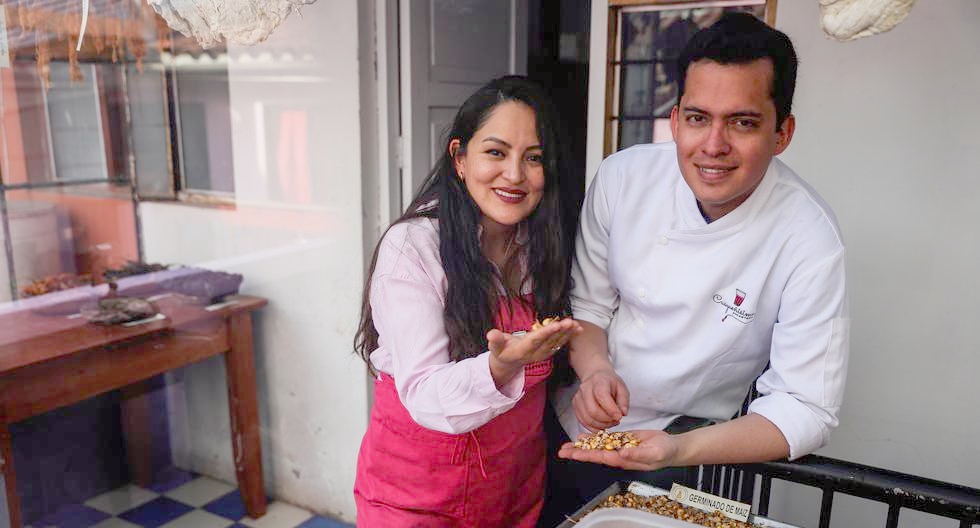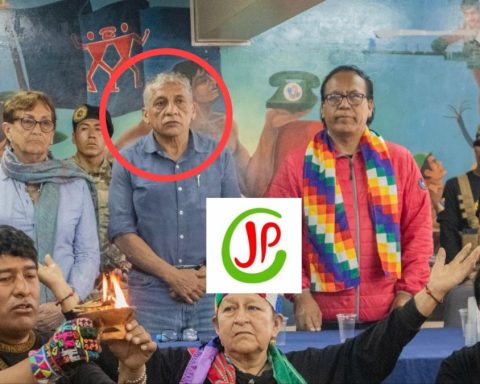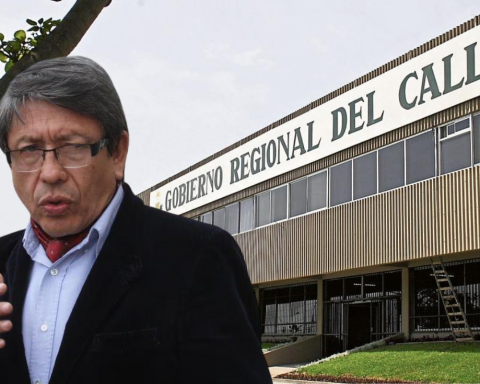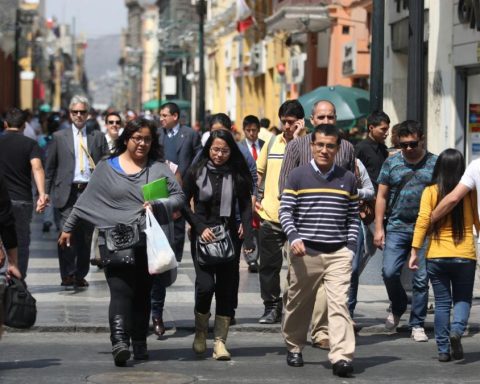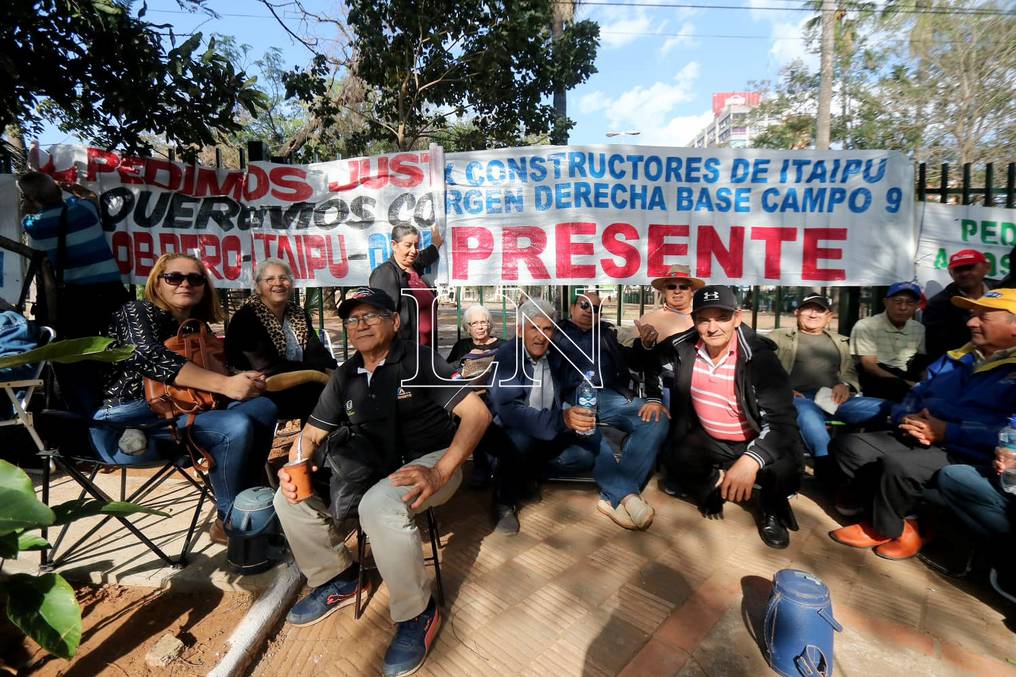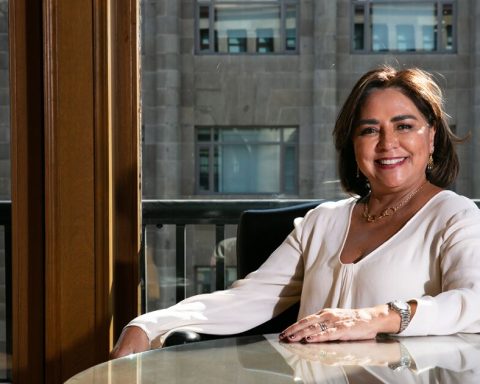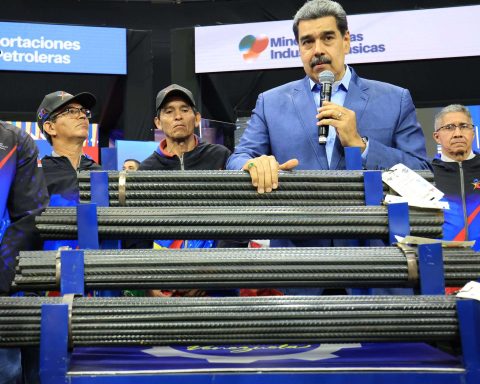What dish do you think of when they talk to you about Cusco food? Cusco’s Plaza de Armas is surrounded by countless restaurants that offer fusion, Italian, seafood, Creole and fast food, but there is no picantería, this being the heart of traditional regional cuisine.
12 minutes from this Plaza de Armas is Cusqueñísima, a traditional picantería under the command of chef José Luján and gastronomic communicator Diana Samanez, who recently held the second edition of Cusqueñísima, the forum, an activity that brought together renowned chefs and entrepreneurs to share their experiences, efforts, and strategies in the gastronomic field.
WATCH THIS: Grilled chicken day: we show you the recipe to prepare this dish
CUSCO 17-18-19 – 2022 PHOTOGRAPHS FOR WEB MAIL. Photos: Julio Reaño/@photo.gec
History of the owners of Cusqueñísima
José and Diana met in 2017. It was not love at first sight, but rather discovering in each other that love for Cusco cuisine. He came to Cusco from Lima in 2010 to work in an important hotel chain. After living in Cusco for a few months, he met Maras and there he heard about regional legends for the first time, and that caught him. “That’s where it all started, I didn’t think I’d stay, but in Maras I thought I’d write a book,” says chef Luján.
The book that Luján mentions came to light in 2014, it is called “Cusco, ancient cuisine” (Mixmade Producciones Editoriales) with the foreword by Gastón Acurio. From 2010 to 2014, the year this book was published, he collected 41 recipes. “I always wrote them down on paper,” says Luján. “Sometimes I would tell him: I’m going to throw this away, and he would say no because he had a recipe there,” recalls Diana Samanez.
“I began to admire his work and until now I continue to admire him for his discipline. Perhaps for the family I would tell him to have fun for a while, but he continues writing and editing, that’s how I met him “Diana says.
How do you separate work from relationship issues?
Diana Samanez: “There is something that is very different between us. What motivates and unites us is the Cusco cuisine. For my part, the emotion of my grandmother, and for José because he fell in love with Cusco before he met me, before having her children here. So when we decide to do an activity, we ask ourselves what each of us is good at and we divide the responsibilities. We know what we are good at and we complement each other. I’m not going to say that it’s always wonderful and rosy, yes there are moments of tension and at the beginning I didn’t know how to handle it and, perhaps, he didn’t either, but then we realized that we were losing energy because of it, we better keep moving forward . LThe couple must have a common goal, because each one has a personal objective and I greatly admire his book and PachaLab, and my goal is to make women visible, but we have a core that is Cusco cuisine that we reflect in Cusqueñísima. Each one does their personal things, but when we have this together we complement each other”.
:quality(75)/cloudfront-us-east-1.images.arcpublishing.com/elcomercio/5DQO2KJCCFFHVM7ZRIKN5KAGSQ.jpg)
CUSCO 17-18-19 – 2022 PHOTOGRAPHS FOR WEB MAIL. Photos: Julio Reaño/@photo.gec
grandmothers who inspire
Something that Diana and José have in common is that their grandmothers were the inspiration to be the people they are today. José had his first approach to cooking since he was 13 years old when he helped his grandmother to sell Piura food at the Amazonas fairgrounds, located in Cercado de Lima. “I remember my grandmother’s food a lot,” says José.
While Diana wanted to reopen her grandmother’s restaurant, the place where she had grown up, where she saw the techniques and remembered the flavors of traditional dishes. “Through our website we wanted to make visible the work of other women because I was very inspired by what my grandmother did and we realized that there was no identity for the people of Cusco because of their own food and the women who cooked left it for them a little. little to the side”, he reveals and this is key because it is the starting point of a long research process that is reflected in a book that will be published in 2023.
:quality(75)/cloudfront-us-east-1.images.arcpublishing.com/elcomercio/EMOFJSC76FH75AEYMBV2EUPBII.jpg)
CUSCO 17-18-19 – 2022 PHOTOGRAPHS FOR WEB MAIL. Photos: Julio Reaño/@photo.gec
a leap of faith
Before arriving at the place where Cusqueñisima is now, José and Diana visited other points but none of them “felt” like the ideal place. A friend told them about that house and upon entering they saw a place that had a lot of work to do. “It was destroyed, two and a half years, nothing that you see now was there. And I was hallucinating the picantería with pink walls. We had the conviction and experience to do it. During the pandemic, all the workers lived here to avoid contagion”, say the owners of Cusqueñísima.
Pandemic
During this period, José wrote the recipes that he has been collecting over the years. “We had saved 3,000 soles because we had invested everything in the fair. The protocol helped us to reactivate through delivery ”, says José Luján.
The book that will come out in 2023
Next year, José Luján will launch his Cusco cookbook, with years of research, which together with his wife toured the thirteen regions of Cusco. “It contains the techniques, processes and history with the advice of anthropologists”, comments José Luján. He hopes his book will set a precedent and motivate more regions to document his traditional food.
“We want to motivate other regions, because I’m sure there is a lot of information that is unknown, but if you don’t document it, you have nothing,” says Luján.
Do you consider it important that Cusco cuisine is cultural heritage?
José Luján: Sure, but to reach that level you have to go through stages. In Arequipa, the Picantera Association has been spreading the word, working for 10 years and now that they have joined, they all use a fulling mill, it is forbidden to use a blender, everyone wears that clothing that transmits tradition, in Cusco there is still no such thing, it is missing. One thing is that you have the recipe, but if you have it saved it is useless. And if one starts, like Arequipa, it is likely that the other regions will follow suit.
:quality(75)/cloudfront-us-east-1.images.arcpublishing.com/elcomercio/KGX72ENENNH3BMKSRGHKOQJAHY.jpg)
CUSCO 17-18-19 – 2022 PHOTOGRAPHS FOR WEB MAIL. Photos: Julio Reaño/@photo.gec
Second edition of Cusqueñísima, the forum
It was held last Saturday November 19 at the Municipal Theater of Cusco. This space for gastronomic dialogue –the most important in the Imperial City– aimed to promote traditional cuisine from Cusco and Peru, working in synergy with the Ayacucho, Arequipa, Áncash, Lambayeque, Abancay, San Martín and Lima regions.
Participation of the invited chefs: Mónica Huerta, Rocío Orihuela, Agustín Jordán, Elia García and Cindy Réategui. The event was staged for the testimonies of three traditional cooks: Brunhilda Leon, from the picanteria The Maria Angola; Maruja Nunez from the cebichería Maruchi, Y Mary Orellana, of San Pedro Market, who shared their culinary roots and experiences in the kitchen. The chef was also present Lenin Cahuana, of the picantería abanquina The Chinese Saoka; Mikhail Coavoy Y Max Anaya, chef and manager Latin Institute of Cusco, respectively; Y Saile Astete, of My bank, who spoke about the opportunities for economic growth in the gastronomic sector. closed the meeting Waldir Maqque, young cook from the Viacha community who is currently a sensation in TikTok and Instagram.
News and data:
- The next one will be the third edition of the Cusqueñisima forum, in addition to dinners and cooks from other regions will be summoned.
- They will release new products including a distillate that they have been making in Cusqueñisima.
- They will begin to export boxes of traditional Cusco sweets.
- Luján and Samanez have other brands such as Don Salchichón Salchipaperia, Gavilán Pollero (grilled chicken) and Chifa Gato Gordo.
IT MAY INTEREST YOU
RECOMMENDED VIDEOS
S’Concha, a cevichera neighborhood in Surquillo

